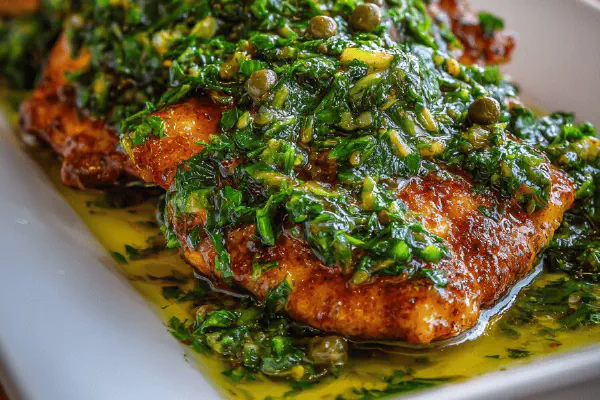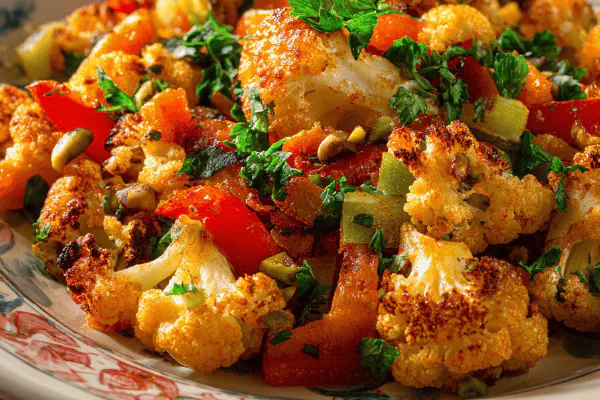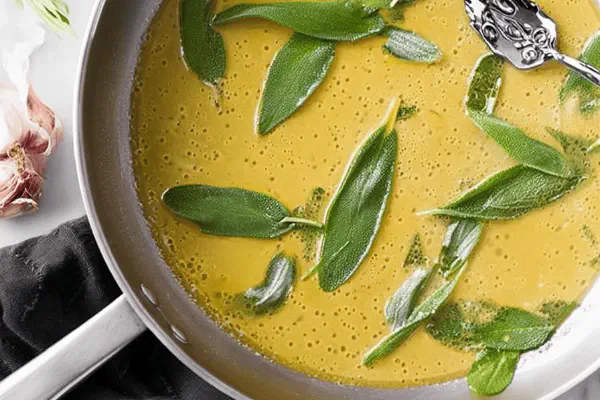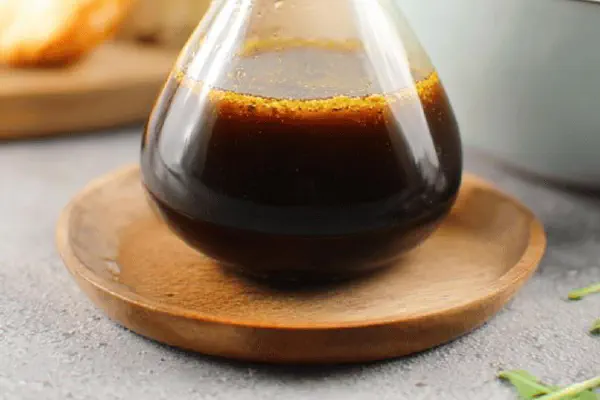Twisted Chermoula Sauce
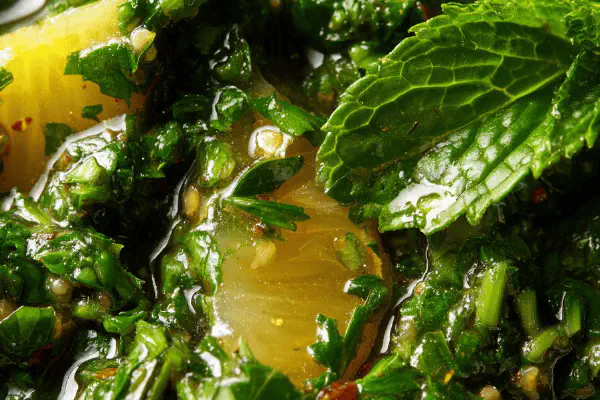
By Emma
Certified Culinary Professional
Ingredients
- 60 g parsley leaves and tender stems (about 1 1/2 cups packed)
- 30 g fresh mint leaves (about 3/4 cup packed)
- 2 garlic cloves, peeled, halved
- 4 ml sumac powder (3/4 teaspoon)
- 5 ml coriander powder (1 teaspoon)
- 60 ml olive oil (1/4 cup)
- 30 ml toasted walnut oil (2 tablespoons, optional for depth)
- 45 ml freshly squeezed lemon juice (3 tablespoons)
- 15 ml white wine vinegar (1 tablespoon)
- Salt and freshly cracked black pepper to taste
About the ingredients
Method
- Rough chop parsley and mint to fit food processor feed tube. No need for smoothie smoothness — want texture here.
- Add garlic halves, sumac and coriander powders. Pulse short bursts, not continuous. Should look chunky, not mushy — bits of herbs visible. Scrape sides once.
- Transfer thick herb paste to bowl. The smell should jump now — sharp lemony, green earthiness; that’s the magic waking up.
- Slowly drizzle olive and walnut oils while stirring vigorously with a spoon or spatula. Oil coats herb bits; mixture thickens, glosses slightly. Walnut oil brings rustic nuttiness; skip if allergic or unavailable — extra olive oil fine.
- Mix in lemon juice and white vinegar last. Taste at this point inserts citrus sharpness, balances herb oils.
- Season vigorously with salt and cracked pepper, stir well. If too tart, add a pinch sugar or more oil; too oily, splash extra lemon or vinegar.
- Rest 10 minutes minimum covered. Flavors marry, sharp edges soften but freshness remains.
- Use cold or room temp. Will darken slightly after hours but still fresh green.
- Store sealed in fridge up to 3 days. Always check oil separation; stir well before using.
Cooking tips
Chef's notes
- 💡 Rough chop herbs, avoid puree. Chunky bits give texture and aroma. Blitz too long and it turns gray, dull. Garlic chunks matter; halved not minced. Too fine, burns out raw harshness. Resting sauce softens that sharp edge, mellows flavors over minutes. Use cold oil, add slowly in thin streams. Emulsify by stir, not dump; coating herb particles changes mouthfeel entirely.
- 💡 Swap sumac if missing. Lemon zest plus pinch salt mimic tartness well enough. Walnut oil optional but brings nutty silkiness contrast to olive’s grassy notes. Allergic? Extra olive oil works fine. For nut-free silkiness, avocado oil substitute works; milder but similar texture. Acidity balance crucial: lemon juice vs white vinegar shifts brightness. Adjust after blending, not before. Pinch sugar calms too sharp citrus snap.
- 💡 Pulse in short bursts, scrape bowl sides regularly. Process in stages to avoid clumps, stuck herbs somewhere dry or wet. If sauce looks oily on top, add finely ground bread crumbs or ground almonds. Thickens, adds body without diluting taste. Texture not puree; usable chunky herb paste. Keep herbs drier if possible; wet herbs need less oil. Salt gradually, it softens herb bite and rounds flavors. Fresh cracked pepper last step adds snap, texture.
- 💡 Rest minimum 10 minutes covered at room temp. Garlic punches mellow out, herbs mingle with oil. Flavor unfolds and rounds. Store up to 3 days sealed in fridge; stir before using as oil separates. Cold thickens sauce; loosen with gentle stir or splash lemon juice. Freeze in ice cube trays for longer storage. Defrost small portions; avoid thaw/refreeze cycles to prevent loss of freshness and texture.
- 💡 If no food processor, hand mince herbs and garlic finely but roughly. Takes longer but control over size of bits. Keep rough bits visible. Raw garlic chunks soften from resting rather than blending smooth. Watch moisture level; adjust oil slowly. Sauce can be loose if too wet. Taste mid prep; balancing acidity and oils can save uneven herb quality or dryness. Use as dip, marinade, or drizzle on grilled meats, veggies — versatile bright punch.
Common questions
Can I replace sumac?
Yeah, try lemon zest plus salt pinch. Not exact but close brightness. Also, sumac can be swapped with mild lemon powder or citric acid if desperate. Flavors shift slightly but sauce stays balanced.
Walnut oil allergy alternative?
Use extra virgin olive oil alone or avocado oil for silky texture. Olive oil brings green grassy notes but avocado adds creaminess without nuts. Skip oil swap if cannot tolerate.
Sauce looks oily on top, what now?
Stir vigorously before use. If still separates, mix in tablespoon ground almonds or bread crumbs to thicken. Resting also helps oils bind. Avoid pouring all oil quickly during blending to prevent pooling.
How best to store leftovers?
Keeps 3 days sealed fridge. Stir before use, oil may separate. Freezing small portions works; thaw in fridge or cold water. Avoid repeated thawing. Rest again post thaw to restore texture and meld flavors.
